EcoFlow DELTA Pro 3 4096Wh portable power station – home backup and more (off-grid review)

The EcoFlow DELTA Pro 3 portable power station is a 4096Wh semi-portable power station perfect for emergency home backup, off-grid living, and disaster preparedness.
To put this into perspective, it can power up to a 4000-watt load for an hour or 2,000 for two hours, etc. If that is not enough, you can add up to 2 x 4000W expansion battery packs—still a 4000W load but 12kWh (think of more fuel in the tank).
And if you have devices that may surge when they start, like an electric blanket, a water heater, or a heat pump, it has a momentary surge to 6000W and can run up to 8000W with its X-Boost feature.
If you want to know more about portable power stations, our guide, Portable Power Stations – power on the go is the best place to start.
Australian Review: EcoFlow DELTA Pro 3 4096Wh portable power station
Note prices are RRP as of 15/10/24, and EcoFlow has launch specials to 31 October (/)
| Website | AU Home Page Product page Additional Battery Accessories DELTA Series Manual (Take care that this links to US pages and prices) |
| Price | EcoFlow DELTA Pro 3 $6999/4099 Bundle with 1 x extra battery $10599/7299 Bundle with 2 x extra batteries $14,499/10499 Bundle with 1 x 400W solar panel $7899/5199 Bundle with 2 x 400W solar panels $9099/6299 There are other bundles at approved retailers or online from EcoFlow. Delivery is generally free in Australia |
| Warranty | Five years ACL Warranty |
| From | EcoFlow online, Harvey Norman and Joyce Mayne, Anaconda and specialist camping and off-road retailers. Do not buy grey market – these have Type I AU plugs and are made for 230V/50Hz. |
| Made in | China |
| Company | The EcoFlow mantra is to create the world’s most innovative, eco-friendly power solutions that enable you to live, dream, and explore without limits. In other words, it includes a range of solar generators and panels, portable power banks, portable air conditioners, and power kits. |
| More | CyberShack EcoFlow news and reviews CyberShack off-grid news and reviews |
New ratings in 2024
We use Fail (below expectations), Pass (meets expectations), and Exceed (surpasses expectations or is the class leader) against many of the items below. We occasionally give a Pass(able) rating that is not as good as it could be and a Pass ‘+’ rating to show it is good but does not quite make it to Exceed. You can click on most images for an enlargement.
We are also tightening up on grading. Pass means meeting expectations for the price bracket. We consider a Pass mark to be 70+/100 with extra points added for class-leading and excellence.
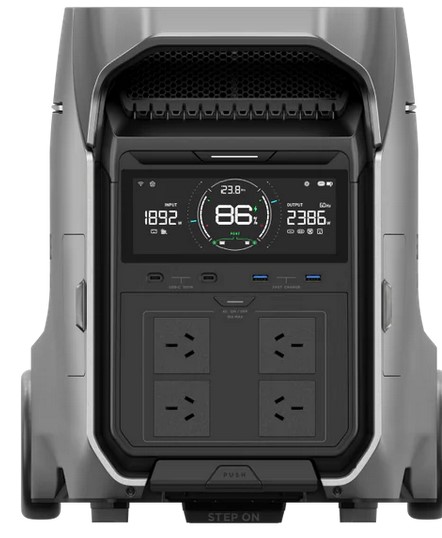
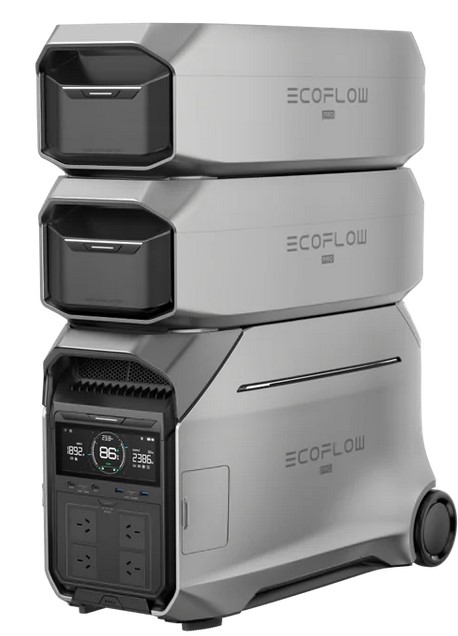

First Impression – damned heavy
At 69.3 x 34.1 x 41cm x 51.5kg, it is definite hernia material. Fortunately, it has integrated rear wheels and an extendable carry handle. The hardest part is the 50kg lift out of the shipping box via two conveniently located front and rear carry handles (and it also provides handle padding).
Otherwise, it shares EcoFlow design cues like sliding panel covers and a comprehensive colour LCD.
What to do with 4000W? Harvey Norman experts say the biggest issue with portable power stations is underestimating the watts needed and the watt-hours desired. We discuss that later.
The primary impression is just how flexible the EcoFlow DELTA Pro 3 is in charging and powering devices.
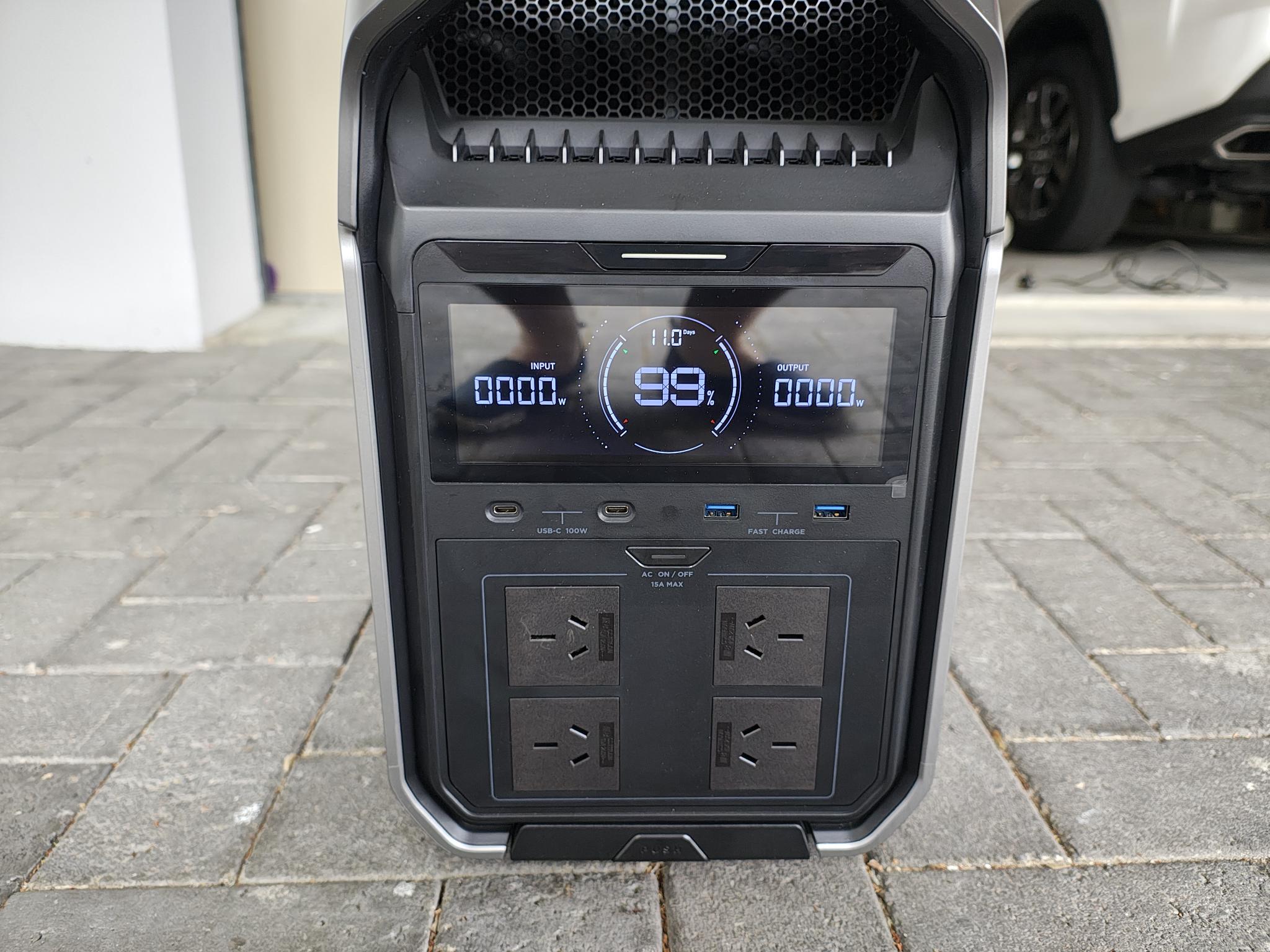
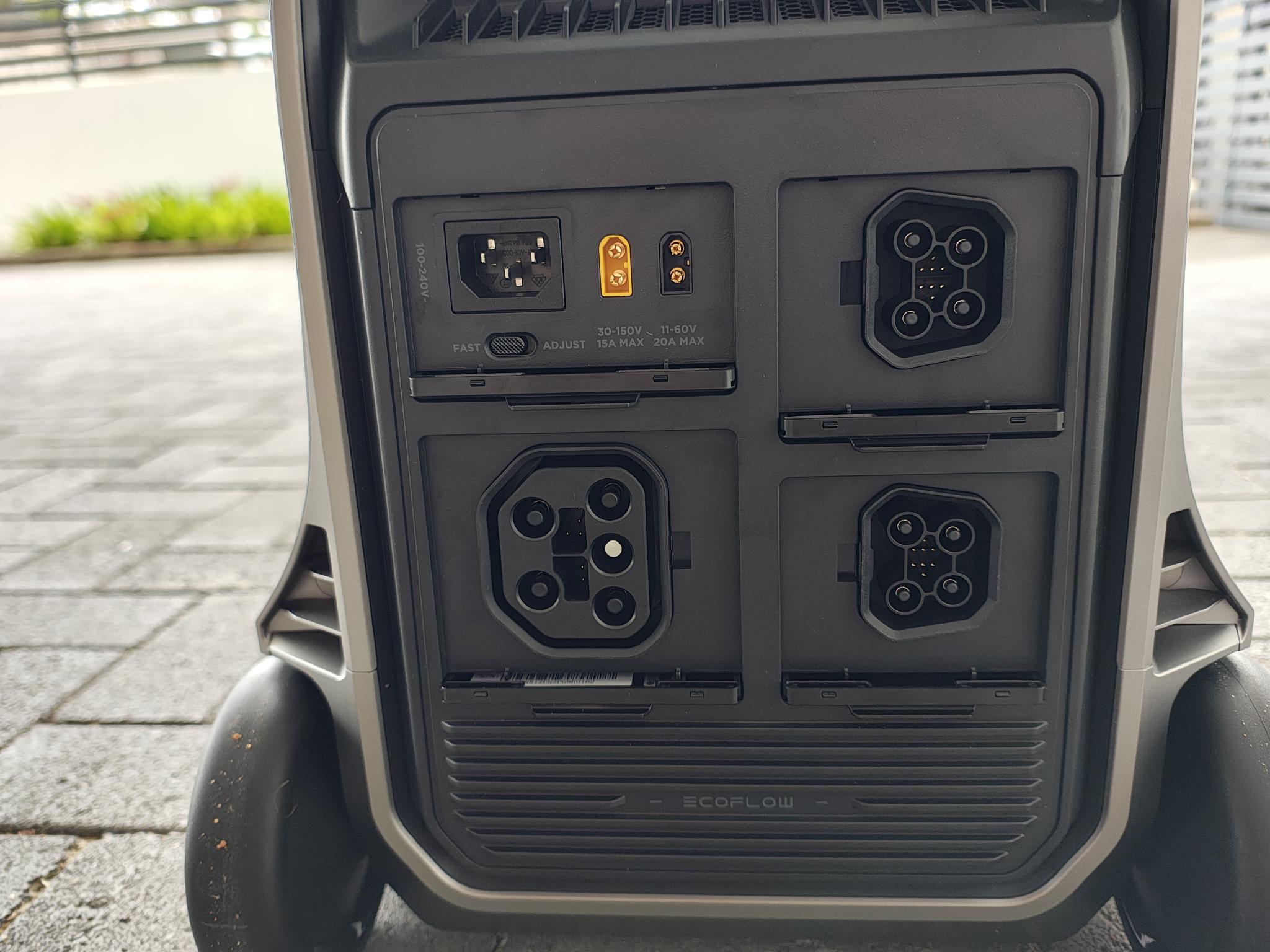


LiFePO4 battery – Exceed
It has a 51.2V/80A/4096W DC battery. Theoretically, it can power 4096 watts for an hour (Wh). However, DC to AC inverter efficiencies, depth of discharge, and power the unit uses need to be factored in. The question we will answer later is how much of the 4096W you can use.
LiFePO4 batteries are not as energy-dense as Lithium-ion batteries. They do not contain elements that create toxic gasses when burned and are not subject to thermal runaway, so we consider them far safer.
The EcoFlow DELTA Pro 3 uses a new battery pack that stacks the cells vertically to minimise the potential for damage. It also has a fireproof, hard shell and IP65-rated casing, although the external unit is not IP65-rated. Batteries are in packs and connected 8S/2P (serial/parallel), which is a safer way to get a 51.2V/80A/4096W battery pack than the cheaper 4S/4P to get a 25.6V/160A/4096W output. Remember that volts do not kill – amps are deadly, and EcoFlow puts safety first.
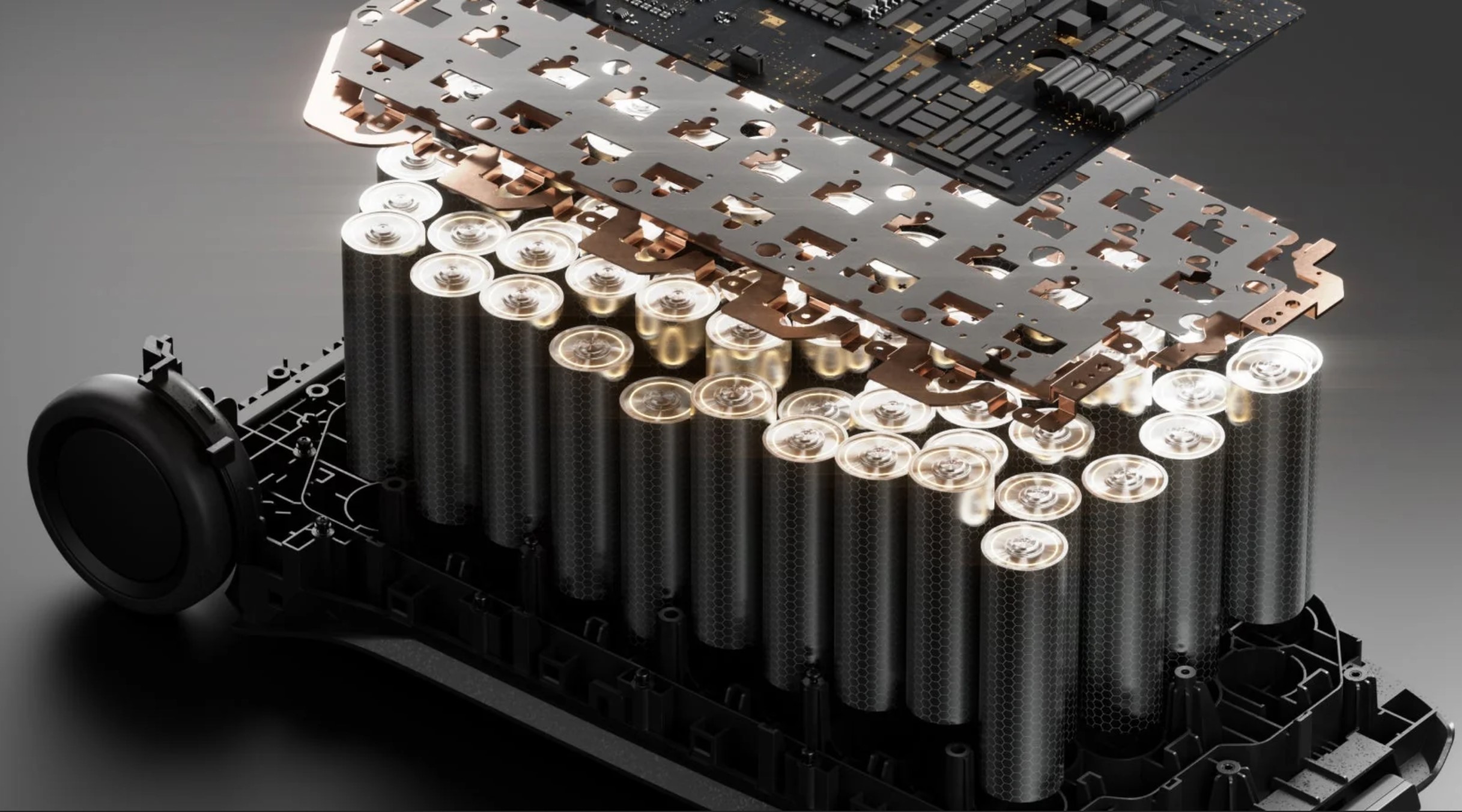
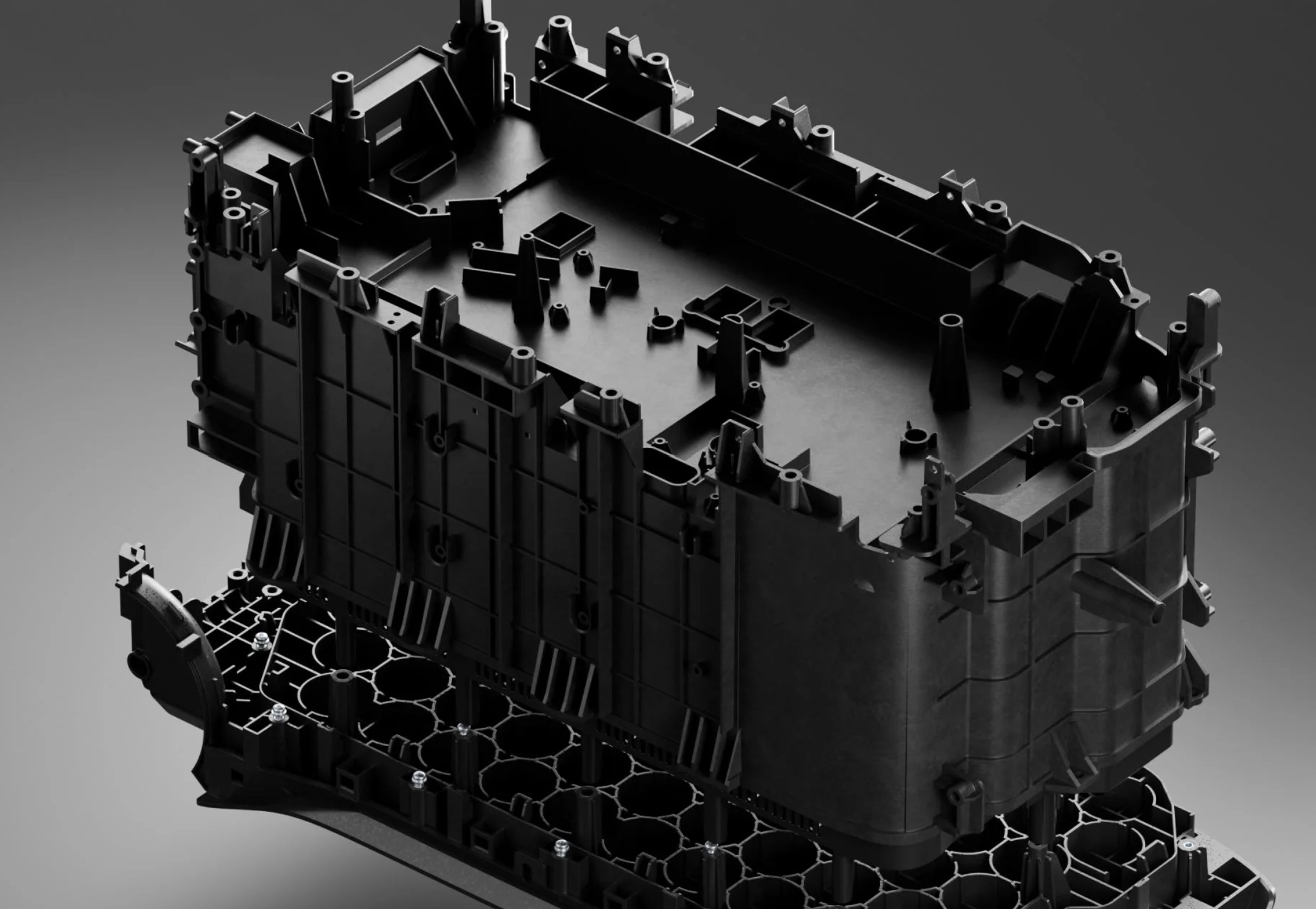
The batteries are rated for 4000 complete recharge cycles (retaining at least 80% charge) or 11 years of constant use.
Its battery management system X-Guard monitors 40 specs, making it one of the safest portable power stations.
Do not buy cheaper generic Lithium-ion power banks – these are dangerous. Read Warning – 164 Lithium-ion battery fires in 6 months in NSW alone. Also read Is there a safe way to charge Lithium-ion batteries?
The App – Bluetooth, Wi-Fi
It can connect to your phone via Bluetooth, which is handy if you don’t have a 2.4Ghz Wi-Fi or Internet connection.
An Ethernet port connects to a $169 DELTA Pro Remote Control Panel (not tested), which appears only to reflect the AC and DC power out and battery state.
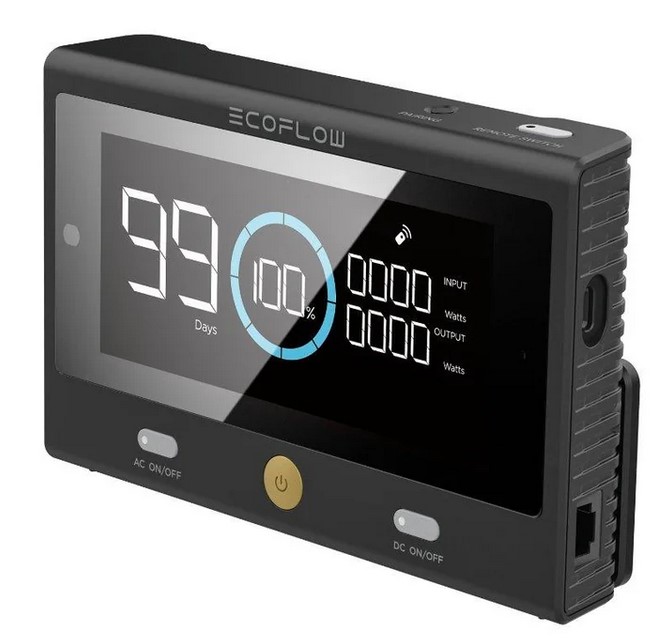
There is also a PowerInsight panel that appears on the US site, which is more fully featured.
The EcoFlow App for Android or iOS lets you control, monitor, and automate power consumption. The images are self-explanatory.


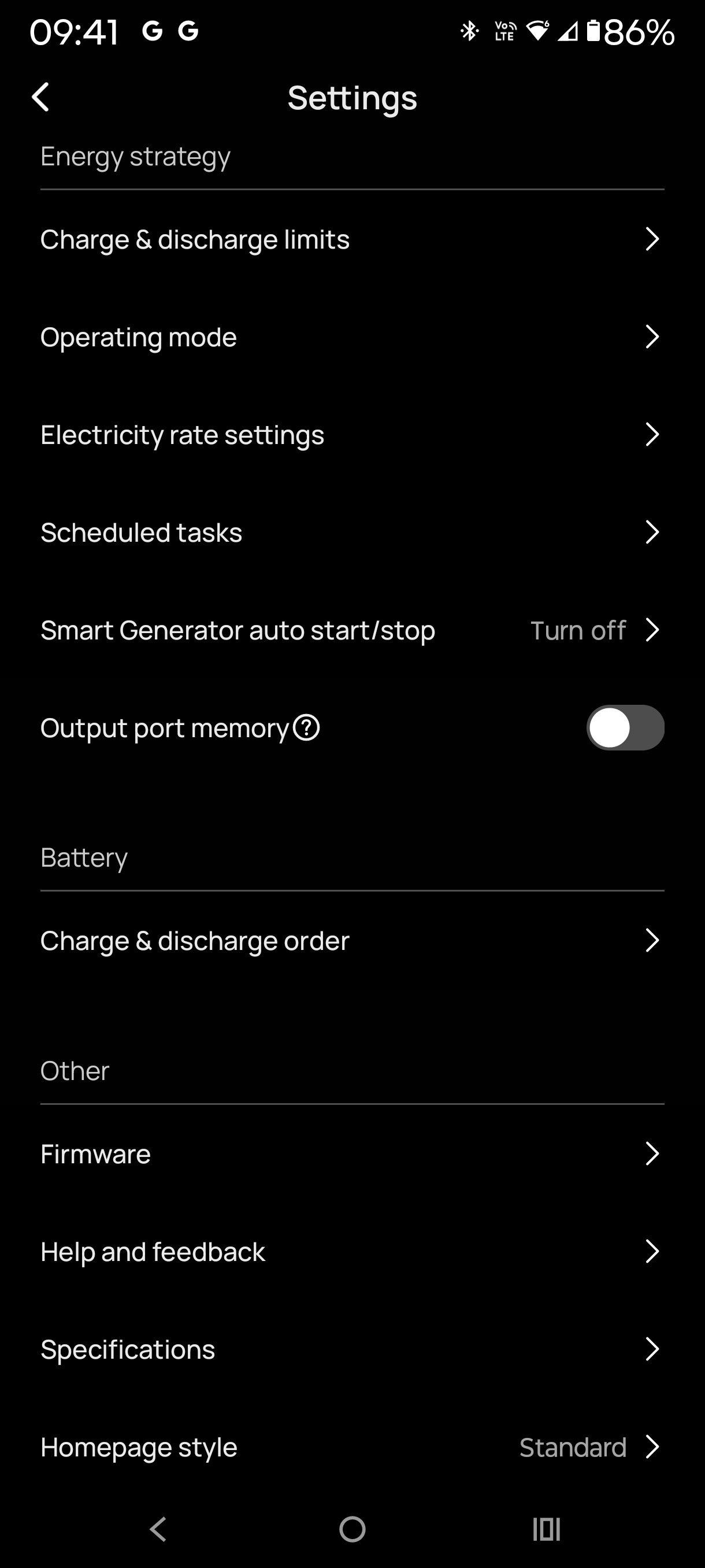
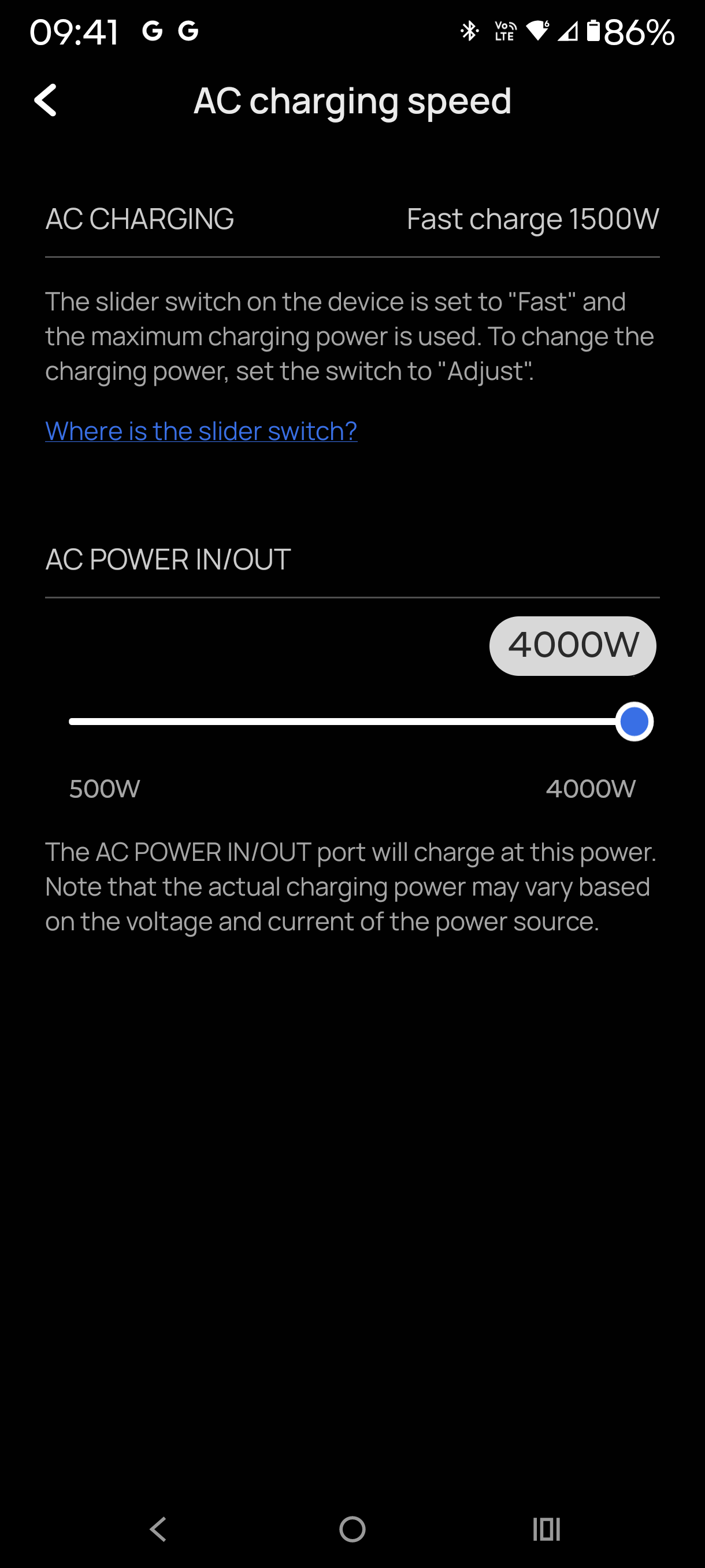

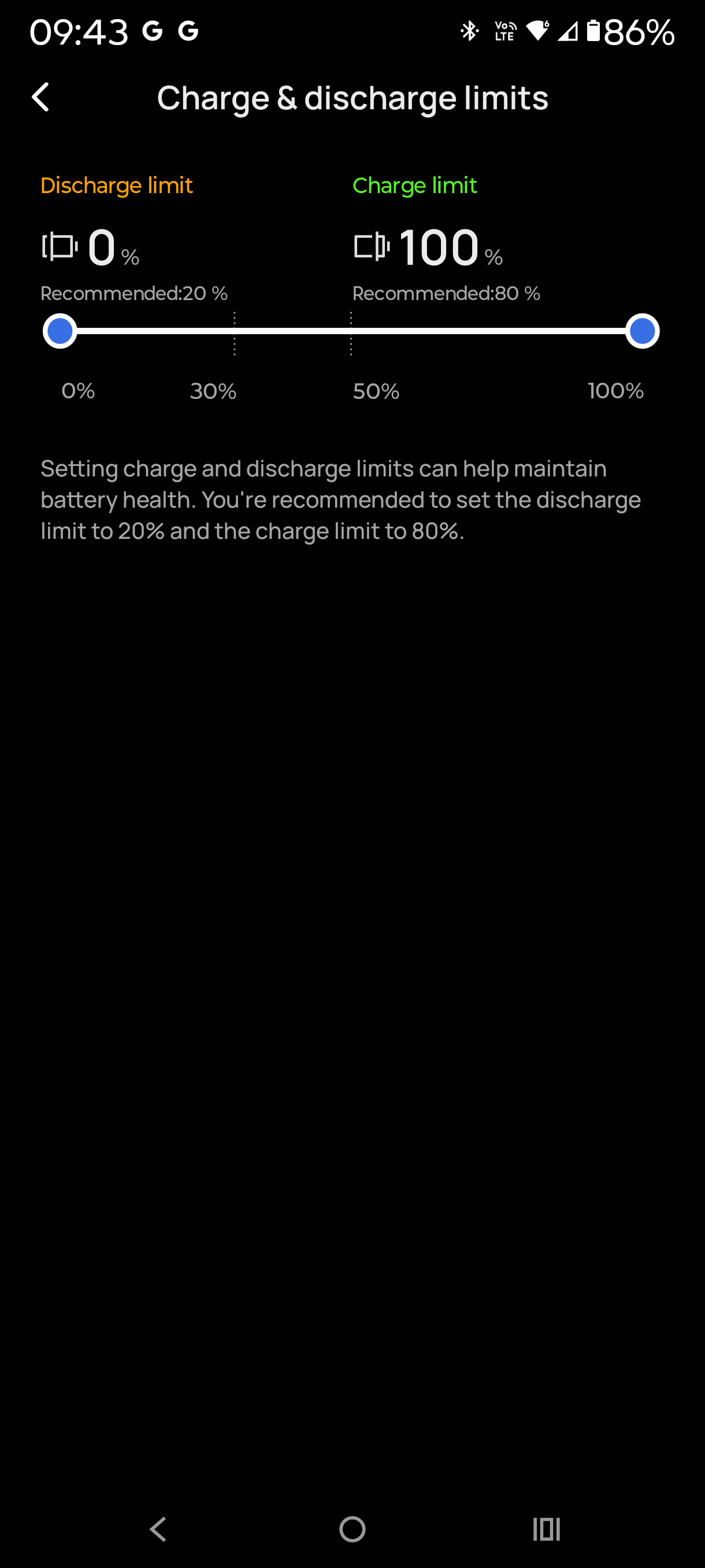
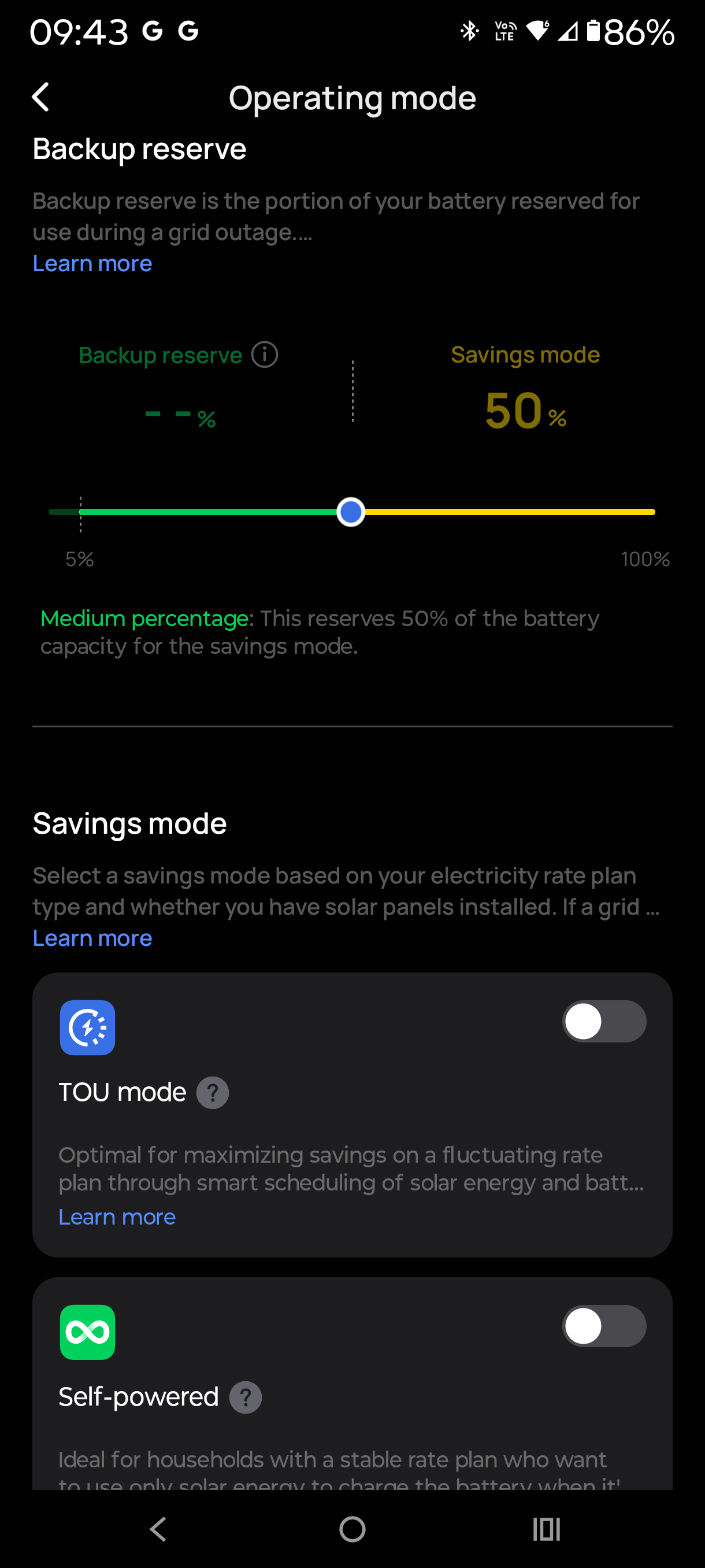
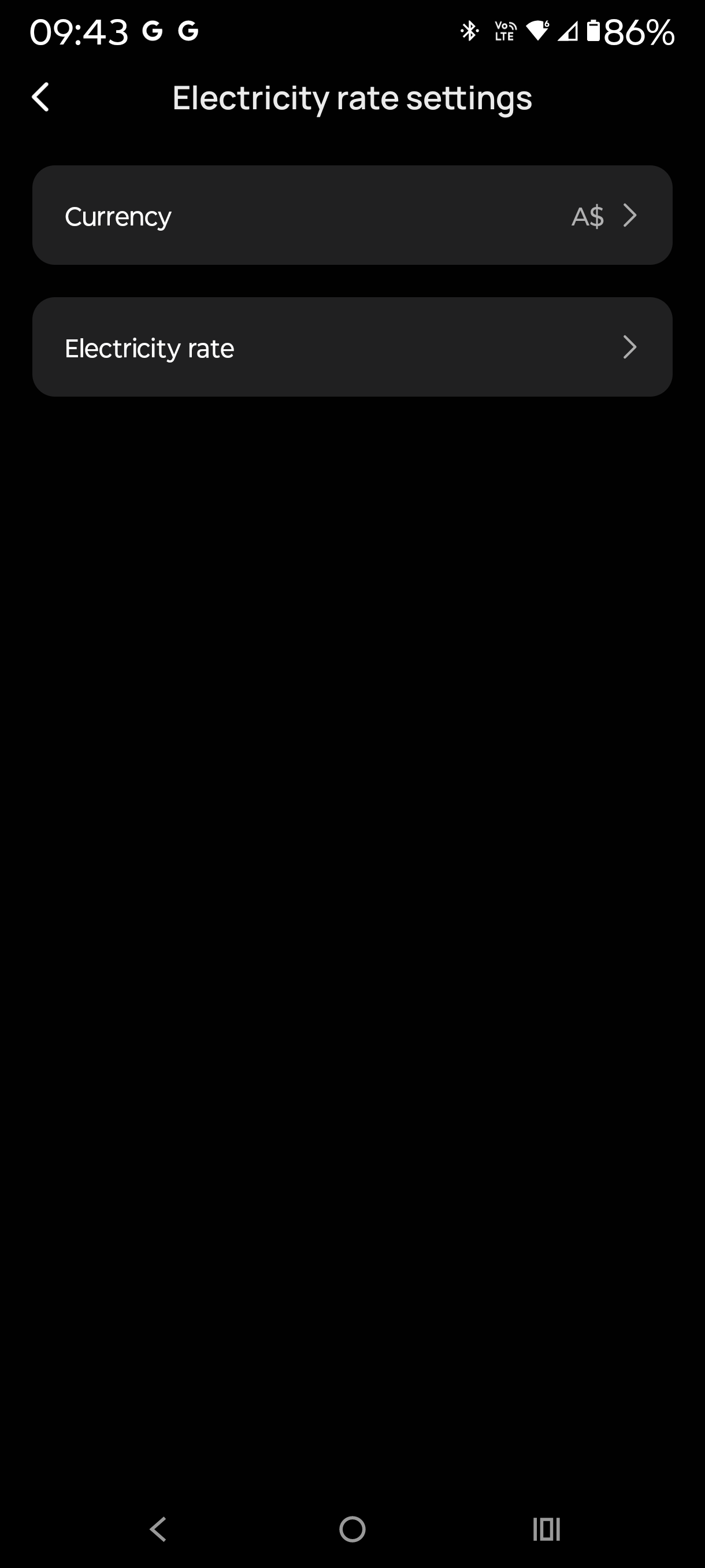

Noise/heat – 30db is a quiet hum
The unit is not waterproof; you can buy a $159 waterproof cover with flaps for heat management. In any case, it Is meant for use sufficiently far from humans, and the overall noise is <30dB.
We could not test overall heat generation, but the exhaust was about 40°. However, the unit always felt similar to the ambient temperature.
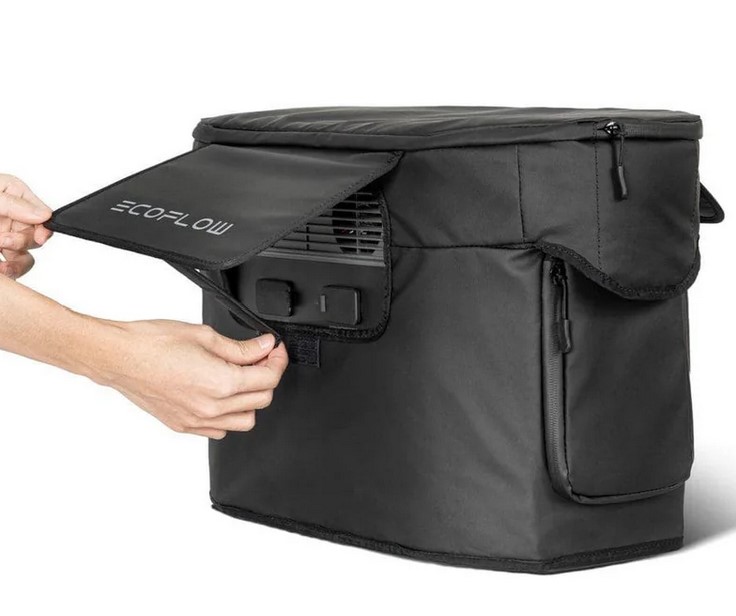
Inbox – Pass
If there is one criticism of the EcoFlow DELTA Pro 3 (and all EcoFlow units), it is the lack of accessories inbox. You get the unit, a 240V power cable, and a pair of pads to wrap around the lifting handles.
As you read on, you will see that almost every input or output (apart from 230V and USB) needs a special adapter. To EcoFlow’s credit, at least they have them on the website.
The hardest part of the EcoFlow DELTA Pro 3 portable power station is working out your use case
Practically, you will attach a variety of devices (Wattage is approximate)
- LED overhead light 5-10W
- Wi-Fi router varies from 10-50W
- Laptop varies from 60-100W
- USB devices range from 1 to 100+W
- Monitors 30W
- TV 55-65” FTA/Streaming 100/200+W
- Portable fridge 50-60W
- Small fridge 150-250W
- Kettle/jug usually 1000+W
- Slow cooker 200W
- Air Fryer or multi-cooker 1500-2000W
- Microwave 1000-1200W
The EcoFlow DELTA Pro 3 will tell you each device’s wattage as you plug them in, allowing you to calculate a typical load. It also indicates the battery run-time. You may find that you need extra batteries, or conversely, you can use a lower Wh unit.
Uninterruptible Power Supply (UPS) – Exceed
If you have essential services like the Internet, Phone, CPAP machine, etc., the unit can switch in 10ms from mains power to battery to keep these going. The 4000W EcoFlow DELTA Pro 3 is overkill, and I use a smaller unit on my Gateway/Router/Switch/Smarthome hub/Light hub, etc. These total about 80W, and a small $499 River 2 300W/256Wh gives me about 3 hours. The attached devices are sensitive, and the EcoFlow pure sinewave means no glitches from under-or-over-power, black-or-brown outs, spikes, surges, etc.
You could also use the larger unit for fridge/freezer backup. Our local takeaway store has a 2000Wh unit that gives up to 20 hours of protection to its freezer, which holds thousands of dollars of food. It was cheaper to get a UPS than insurance.
Summary: Cleaner power that is there when you need it. No setup required
Small home solar
A typical small home or apartment consumes about 300Wh (fridge, standby sleeping devices, and internet) and goes to 3000Wh with cooking and lights. This unit can be hooked into solar panels (usually on the balcony), and a qualified electrician can fit an isolation switch, which means the battery powers everything until it runs out.
Consider that a typical larger home only needs 5000-6000Wh.
Larger Home solar
Although only approved for use in the US (at present), an Ecoflow Smart Home Panel can permanently wire up to three EcoFlow DELTA Pro 3 and six extra batteries into the home grid.
Motorhome and cruiser
There is a dedicated CEE 16A 230V/16A/3680W RV socket. Coupled with AC, solar, and other charging forms, this may be an excellent off-road backup.
LiFePO4 battery expansion – convenient
You can extend the capacity (think of this as fuel) by adding up to two 4096Wh EcoFlow DELTA Pro 3 Smart Extra Batteries. These are $3999 each but can be bundled for better pricing. They stack on top of the unit.
Charging options

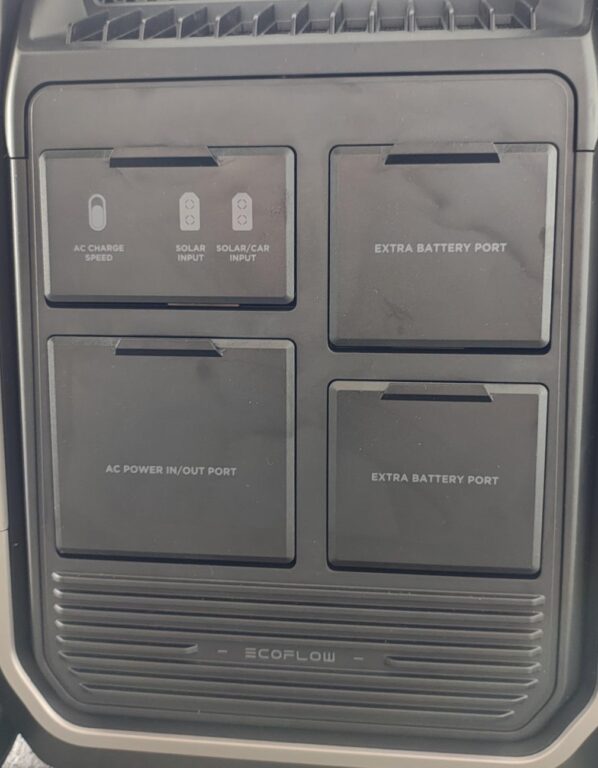
230V 10A Wall outlet
Consumer Advice: Most Australian homes have 230V/10A/2300W rated power sockets and at least two power circuits protected by 20A circuit breakers (that allows for a combined total of 4600W). Older homes may only have 10A circuit breakers. If you trip the circuit breaker, it simply means that the device is faulty or draws more than 2300W.
This can draw up to 4000W (230V/17.5A) during charging, but most power points only deliver 230V/10A/ 2300W and take about 2.2 hours (100 minutes). You can adjust the wattage charge rate in the app or via a switch on the unit.
Solar – in theory (as we don’t have these to test)
Caveat: Solar panel efficiency is impacted by the incorrect angle to the sun, clouds, and shade.
EcoFlow has a portable (13kg), four-segment, foldable, IP68, 48V/9.8V 400W rated solar panels. They are Unfolded 105.8 x 236.5 cm x 2.5 cm and Folded 105.8 x 62 x 2.5 cm
The unit’s High–PV port takes 30-150V DC up to 15A and 1600W. The $59.90 5m XT60 charging cable is required.
Theoretically, it could take three 48V/9.8A/400W panels wired in serial for 144V/9.8A/1411W. Considering efficiency factors, this could charge the unit in <10 hours.
The Low-PV port takes 11V-60V DC up to 20A and 1000W. Two 48V/9.8A panels wired in parallel could provide 48V/19.6A/941W. The $39.90 2.5m XT60i charging cable is required.
You can use both PV ports for faster charging. However, you will need EcoFlow T (serial) or Y (parallel) cables.
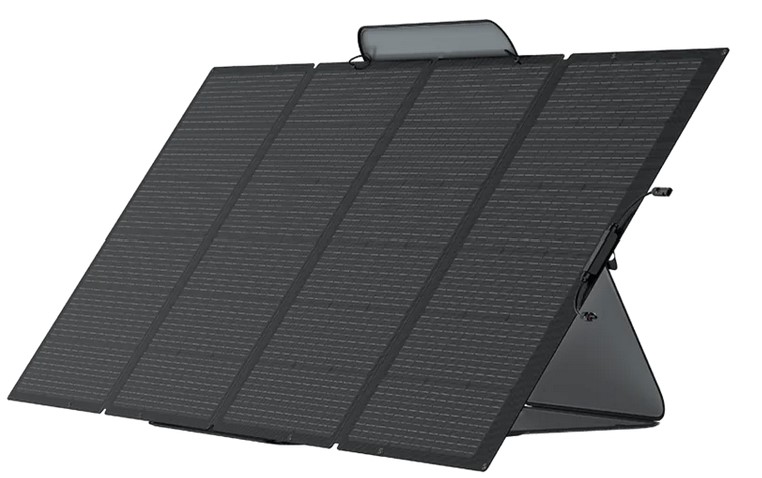
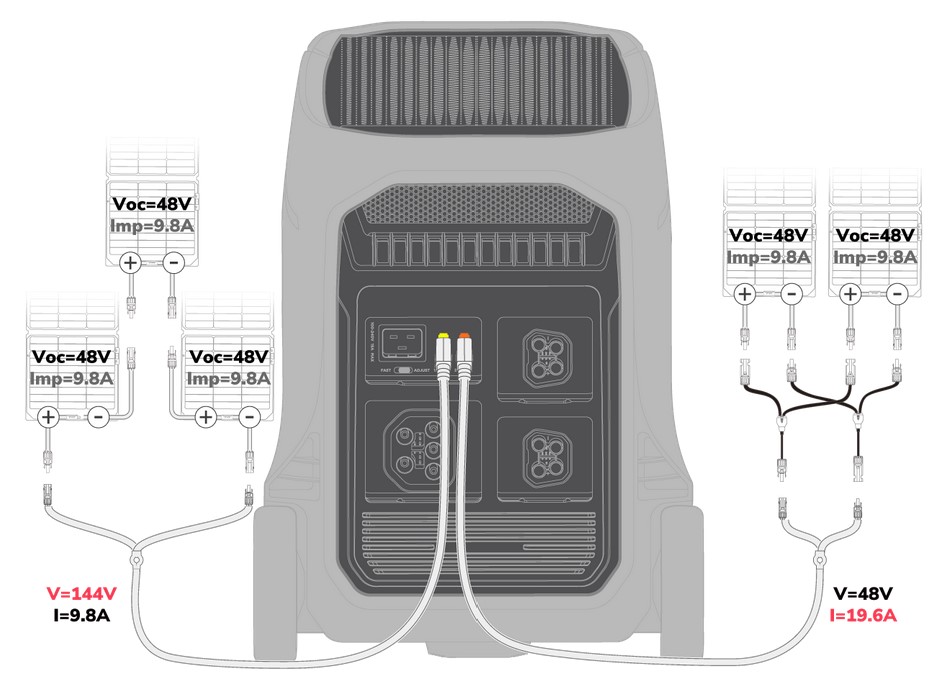
You can use other brands of solar panels as long as the V/A/W is within the High-PV or Low-PV spec.
Car utility socket – cigarette lighter
Caveat: You can drain the car’s battery, so take care and set limits. Charging while driving should have no issues.
A cigarette lighter socket is nominally rated 12V/10A/120W. The $49.90, 1.5m EcoFlow car charging cable plugs into the cigarette lighter socket and the other end to the Low-PV port, which can handle over-voltage and over-amperage. Some vehicles can be fitted with 12V/20A/240W outlets.
Theoretically, charging at 120W may take 30+ hours, which is more about topping up as you drive.
EcoFlow also has a $799, 800W Alternator Charger that runs off the car alternator. It provides charge, reverse charge and battery maintenance modes and can top up a DELTA battery at 1000W every 80 minutes.
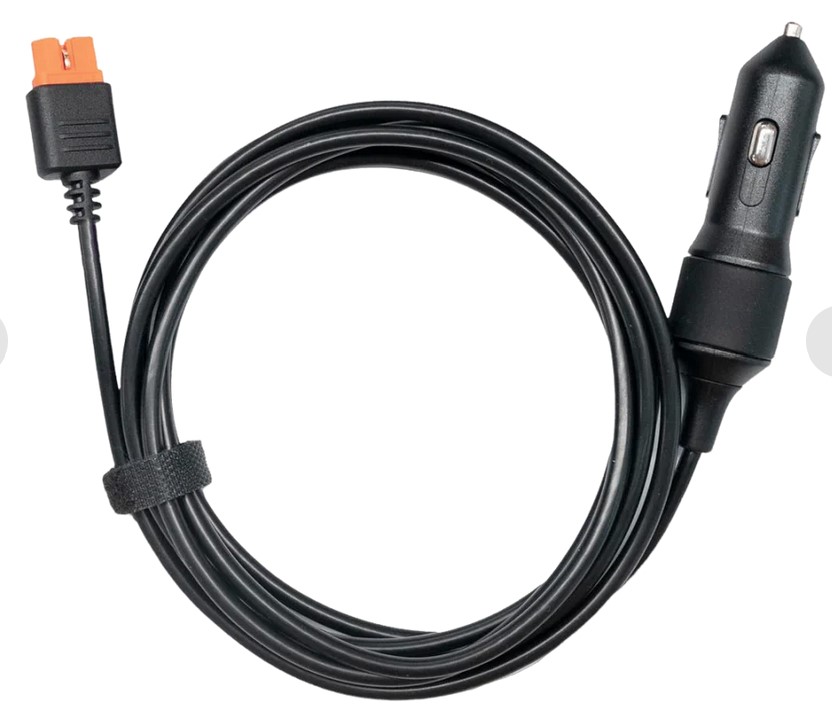
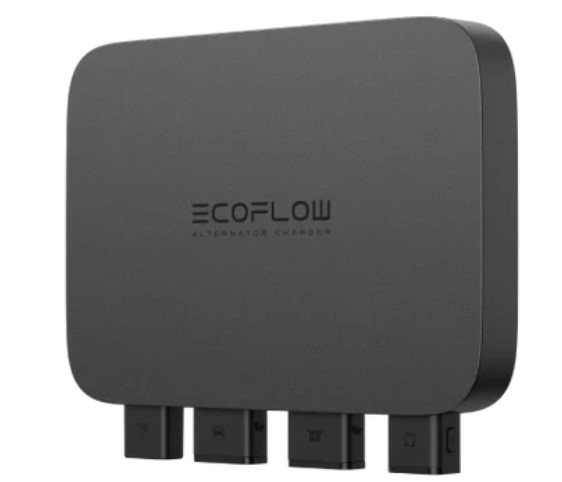
EV Charger
You can charge at EV stations or a 7.2kW charge port at home (if installed). The $169 connector supports Type 1 and 2 EV connectors and plugs into a special AC Power In/Out connector on the back.

Generator
The $139 Smart Generator Adapter allows for more amperage, and you can use the extra battery port. Alternatively, you can use the AC power cable socket for 230V/10A/2300W.
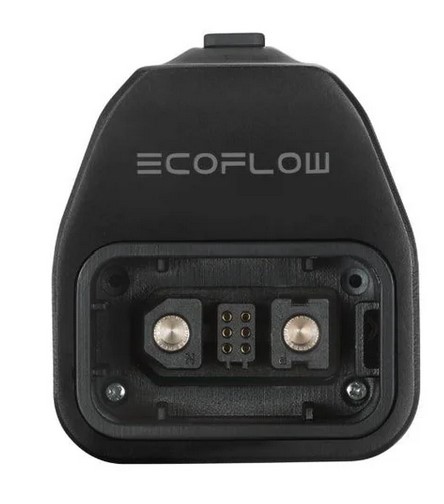
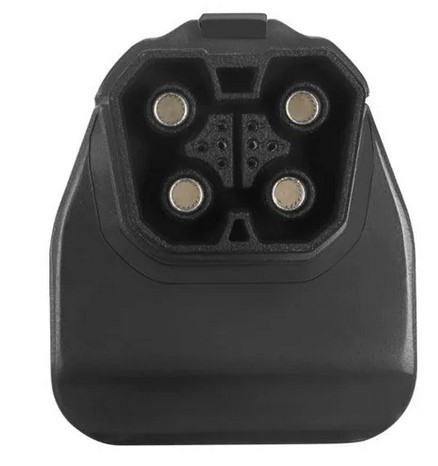
Power Out options
The power-out options are almost as comprehensive.
230V AC
- Four front-facing AU Type 1 230V sockets supporting a total of 4000W (momentary surge to 8000W). In bypass mode (where the 230V is passed through bypassing the battery), it is limited to 4000W (no surge)
- One left side facing CEE 16A socket
- One rear-facing AC POWER IN/OUT port discharge only 230V/1.4A/400W
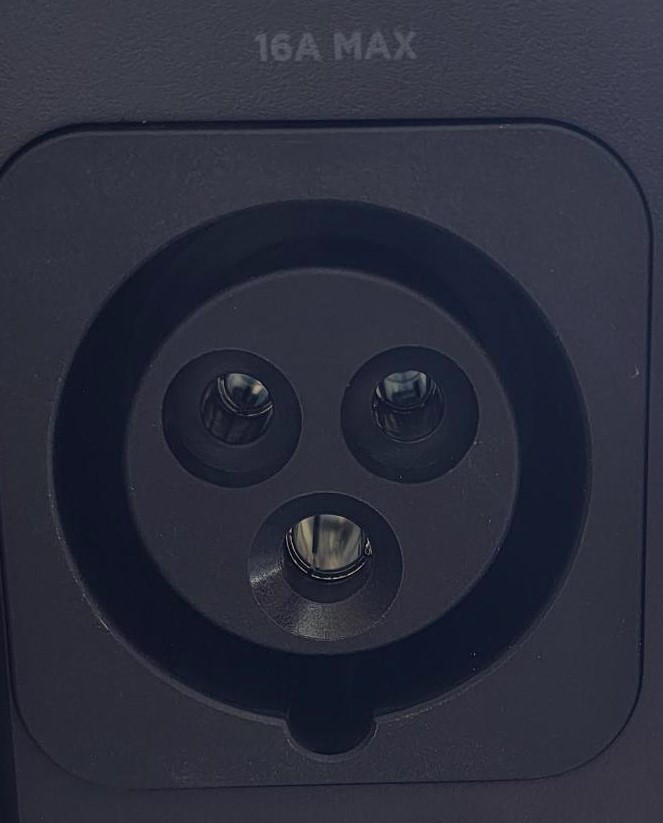
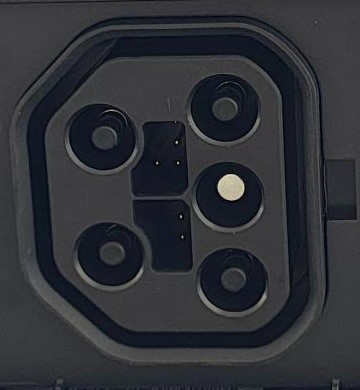
USB DC (front-facing ports)
- 2 ×USB-A (QC3.0): 5V/2.4A/12W, 9V/2A/18W, and 12V/1.5A/18W (maximum) per port (36W total)
- 2 ×USB-C (PD3.0): 5 / 9 / 12 / 20V⎓5A, 15V/3A/15W, 100W (maximum) per port (200W total)
The USB-C ports will charge and run a 100W laptop or several smartphones (typically up to 5000mAh or 20W).
12V DC (right side facing)
The $49.90 100cm DC5521 to DC5525 is a standard 5.5mm x 2.1mm DC male-to-male cable. It uses a barrel plug and can be used for any DC 12V/5A/60W appliance.
The Anderson port is DC 12V/30A/360W. The maximum wattage total of both cables is 12V/31.5A/378W.
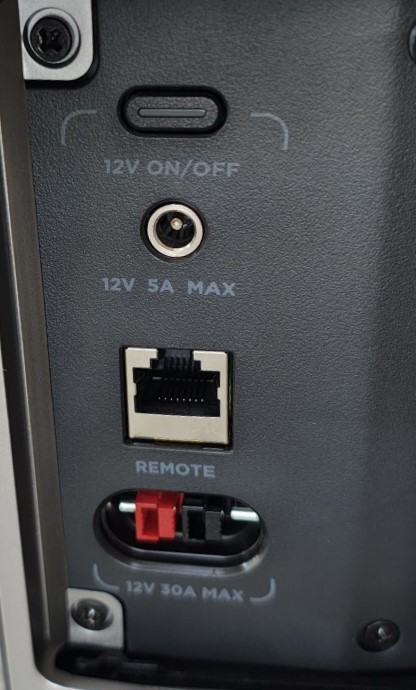
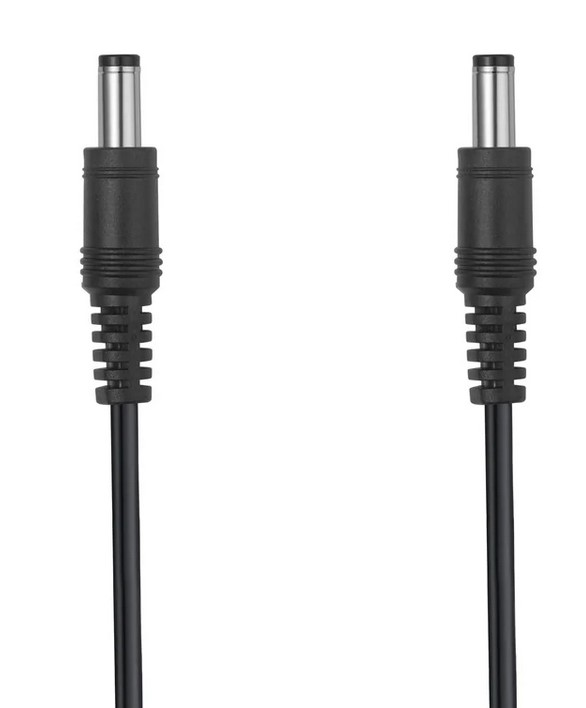
Can it charge an EV?
Enable GFCI/RCD support in the mobile app and plug a Gen 2 adapter into the battery, with one end plugged into the car’s NACS port. This has not been tested but provides around an hour of EV use.
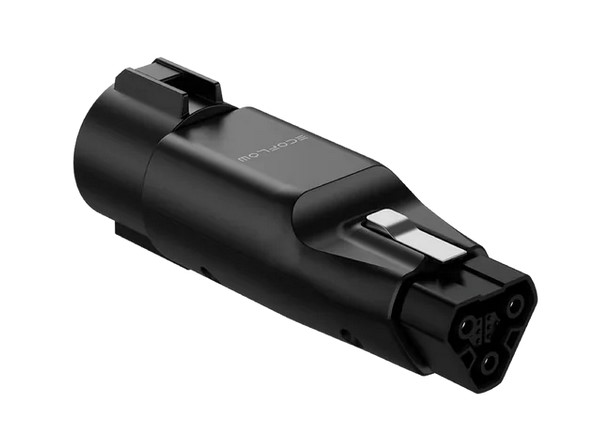
Tests – Pass+
- Full charge at 2300W (230V/10A): 2.2 hours. If 2300W is too much for your power circuit, you can adjust the input wattage via a switch or in the app.
- 230W static load (para floods): 17.3 hours (3870W)
- Portable fridge 50L 45W AC: 86 hours (3825 with a compressor, not inverter)
- Portable fridge 50L 12V/3.75A/45W DC: 87 hours (3915)
- 55” SDR TV 100-150W: 38 hours (3800W)
- 65” HDR streaming 200-250: 19.5 hours (3900W)
EcoFlow recommends setting the Depth of Discharge to 80/20 (60% use) to prolong battery life, which is fine in semi-permanent installations. But for most users, you will set it to 100/0 to give you 100% battery use.
EcoFlow does not state the inverter efficiency converting DC to AC. Given the portable fridge test results, we think that is around 90%. The unit appears to use about 15-18W when idle. So, the rule of thumb is to allow a 5-10% margin of error.
EcoFlow would be well advised to publish these specs as other companies do.
Privacy policy- Pass
The App requires you to establish an account and agree to the privacy policy (at the end of the review). It is benign and safe to accept.
CyberShack’s view – The EcoFlow DELTA Pro 3 is a 4069Wh beast of a portable power station
I am going home solar and will install panels with about 10kW generation capacity, Enphase microinverters, and two Enphase IQ 5kW batteries. These will provide 7.68kVA constant power and nearly double that in surge power. The system will run the whole home, including A/C, and have EV 7.2A charging.
Let me tell you that technically, I could use two to three EcoFlow DELTA Pro 3 and suitable controllers (not in Australia yet) to achieve the same ends, probably for a lower cost. So, these are the way to go if you have an off-grid shack.
My builder recently bought the EcoFlow DELTA 2 Max 2048Wh, which powers home build sites all day, including a small fridge, safety lighting, and power tools. He will get one now that the EcoFlow DELTA Pro 3 is available. “You can never have enough power,” he says.
At 51.5kg, it is not really portable – luggable with the integrated handle and wheels, so it is not the kind of device you will use around the weekend campsite (unless you are Hulk Hogan). Still, it is an excellent addition to a motorhome or RV, especially if you have a ‘storage boot’. My friend has a 12kg 1024W EcoFlow Delta 2 in his motorhome, and it suits them well – except when they run the microwave, fridge and TV simultaneously. “I need a little more wattage”.
We have found that cheap generic brands use lower-efficiency inverters, may use Li-Ion batteries, have more batteries in parallel (to achieve the higher wattage), and have a lower depth of discharge, so stick to brands like EcoFlow.
That brings me to an inescapable conclusion.
Portable power stations are the next big thing, even if you don’t know you need one. We have three, ranging from 200 to 2000W, and they have saved us many times during blackouts. Of course, once we have rooftop solar, we will still use two as UPSs.

Competition
In our opinion, Bluetti is the only other brand worth considering. It offers a range of high-capacity home backup units and extra batteries of similar quality.
EcoFlow DELTA Pro 3 Rating
We will rate it as a potential off-grid home backup system instead of a camping and outdoors system.
- Features: 90—It has many charging options that can be used together. It can also charge 230V, USB, DC, and EVs.
- Value: 80—It is comparable to Bluetti. But be warned that, depending on use, you will need a range of accessories and cables.
- Performance: 85 It appears to have decent inverter efficiency (90%+) and uses a small amount of idle power. It is rated at 4096Wh, but we got 3800-3900Wh in tests – very good.
- Ease of use: 85 – 51.5kg is heavy, so ensure you can manage it. Otherwise, the unit is plug, charge and play. The app adds value via firmware updates and to set efficiency parameters. The 5-year warranty is excellent, and the 4000 charge cycle battery (still holds 80%) reflects quality LiFePO4 batteries.
- Design: 85 – I like the integrated carry handles, slip-out handle, and wheels. The rear and side ports have integrated slip-in covers. Despite my complaining about extra cable costs, at least they are readily available. Something this big needs an overall IP rating.
EcoFlow DELTA Pro 3 4096Wh portable power station
From $6999 less any event related prootionsPros
- Very well made and meets or exceeds stated performance parameters.
- Lots of ports and input and output options
- Heavy but wheels and carry handles help
- Great display and informative app
- Expandable by two x 4000Wh batteries
Cons
- Not portable, more two-person lift
- Many, many expensive cables and adapters needed








